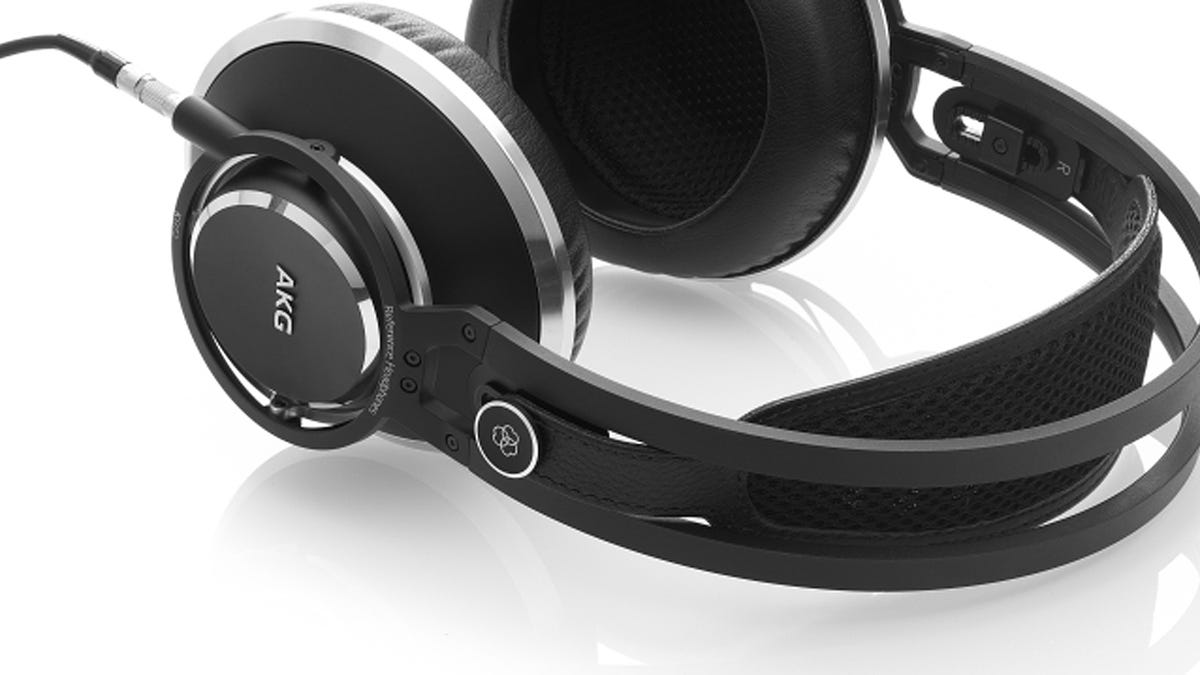AKG's twin flagship headphones, the K812 and K872
The new AKG K872 looks a lot like the K812, but they sound quite different.

As the world gets ever more complicated a great-sounding headphone can provide a temporary shelter from the storm. Play the music you love, close your eyes, and take it all in with AKG's K812 or K872 headphones.
The K872 headphone is a near twin of the K812 that came out a few years ago. They were both designed primarily for pro users, but I get the feeling more well-heeled audiophiles than pros bought K812s.
The AKG K872 headphones
As I said, the two models look similar, but under closer inspection, you'll see the K812 ear cups have metal mesh grilles while the K872's have metal caps. The headbands are identical, and both models sport similar 53mm drivers with 1.5 Tesla magnets, but the headphones are tuned differently. Trust me on this, they sound different. The K812 and K872 are both extremely comfortable to wear for extended periods of time. Since the K812 is an open-back design you can hear the world around you; the K872 is a closed-back design, and does an above-average job banishing external noise. Both headphones' mostly metal construction feels robust, and they each weigh 13.8 ounces. Impedance for both is the same: 36 ohms.
I know the K812 well, so I wasn't in a hurry to compare it with the K872. I spent a few weeks just listening to the K872 with different headphone amplifiers, the microZOTL2.0, Oppo HA-1 and Pass Labs HPA-1. The K872 sounded great -- that was obvious from the get-go -- but not like a K812.
Still, when it came time to compare the two there were marked differences. I would have expected that two headphones that share so many of the same parts and overall design DNA to sound more similar. But the K812 is leaner in the bass and midrange, the K872's sound was less spacious, less "live," and less immediate.
At home with the K812 it's easy to forget you're wearing headphones. Not just because they're super comfy, you can hear people talking around you. The K872's isolation far more effectively hushes external noise, and that's great, but its soundstage narrowed compared with the K812's.
The K872 also sweetens the sound in a nice way but loses a bit of transparency. The upside to the K872 is that it tames some of the harshness that plagues so many recordings.
No doubt about it, the K872's bass went deeper than the K812's when I played jazzy electronica wizard Amon Tobin's "Bricolage" CD. The low-end throb had more a visceral feel over that of the K872. The K812 tilted the tonal balance north and the recording's aggressively harsh treble was revealed.
Mac Quayle's synth-driven soundtrack for the "Mr. Robot" TV series also delivered more satisfying low-end oomph with the K872; switching over to the K812 lightened the bass impact. For some listeners, the K812's low end might be too lean.
The AKG K812 (left), and AKG K872 (right)
Most high-end headphones are hard to drive and need more power than a smartphone or most portable music players can deliver, but both the K812 and K872 sounded fine with my iPhone 6S. Of course, hitching a digital converter/amp to your smartphone will produce better sound quality with the AKGs, or any other headphone for that matter. I had good results with the $199 AudioQuest DragonFly Red digital converter/amp.
I love both AKGs, but the K872 better tolerates aggressively compressed recordings than the K812 does. That point was driven home by the Rolling Stones' brutally harsh new album, "Blue & Lonesome," which threatened to tear holes in my eardrums with the K812. The K872 pulled the harshness down just enough to let me listen to a couple of tunes without grimacing.
Streaming MQA high-resolution files on Tidal with a Mytek Brooklyn digital converter (my review in the works) the K812's superior clarity carried the day for me.
So what I'm saying here is the K872 and K812 sound different. The K812 is leaner, the K872 fuller, the K812 is more transparent, open, and spacious, the K872 is less so. The K812 lets you hear the world around you, the K872 hushes the din. They look and feel nearly the same, and they're both the same retail price, $1,499, but it's easier to find discounts on the K812.

